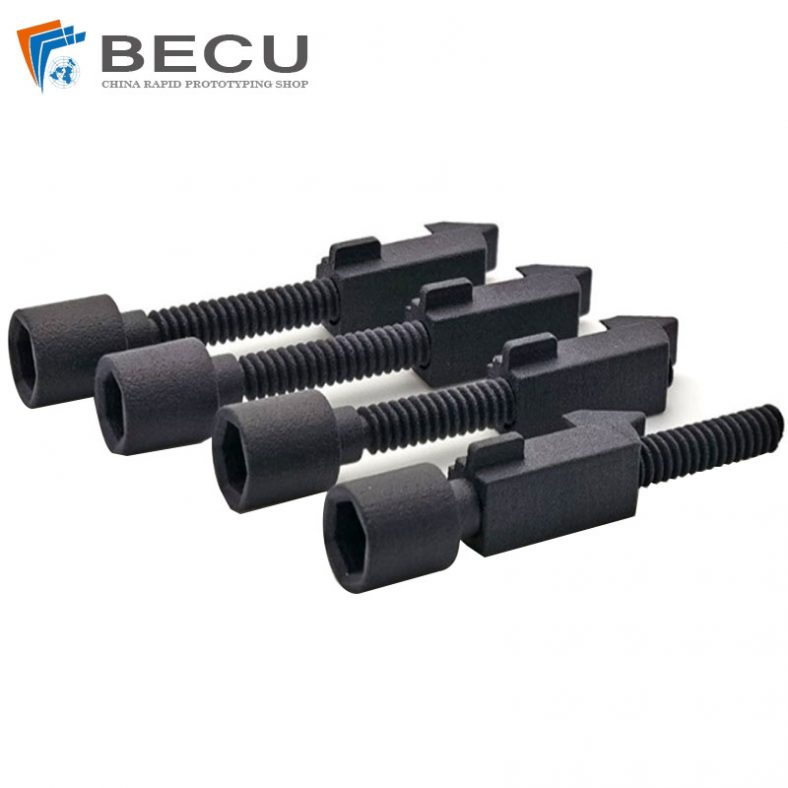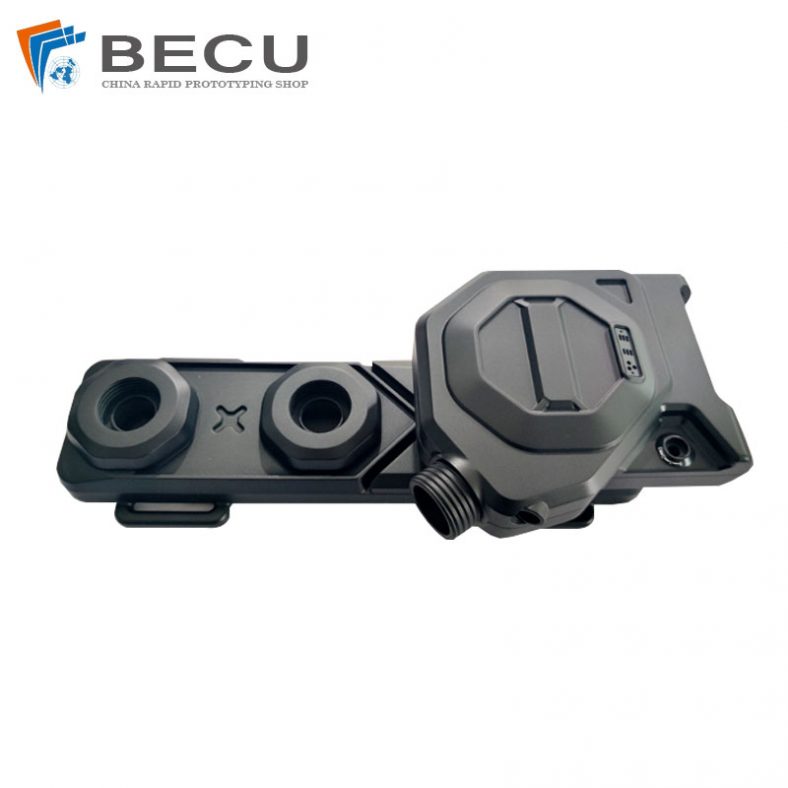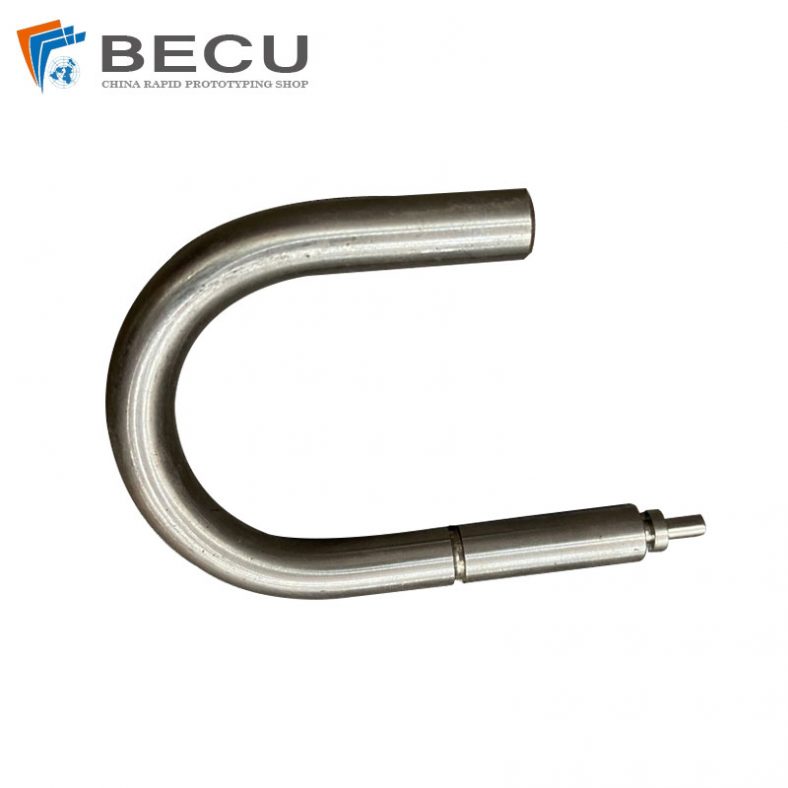The field of medical equipment manufacturing has witnessed remarkable technological advancements in recent years, thanks in no small part to the proliferation of CNC (Computer Numerical Control) machining. CNC machining has revolutionized the production of medical components and devices, offering precision, reliability, and consistency. However, choosing the right material for medical parts is a critical aspect of the CNC machining process.
This comprehensive guide aims to provide a deep dive into the world of materials used in medical equipment production. From stainless steel to biocompatible polymers, we will explore the best types of materials for medical parts, each with its unique advantages and challenges. By the end of this extensive article, you will have a clear understanding of how to select the most appropriate CNC machining material for your specific medical device application.

Understanding the Importance of Material Selection in Medical Equipment Manufacturing
Material selection is a critical factor in the design and manufacturing of medical equipment. It plays a pivotal role in determining the performance, safety, and regulatory compliance of medical devices. This section delves into why material selection is of utmost importance in the medical equipment industry.
Why Material Selection is Crucial in Medical Equipment Manufacturing:
- Biocompatibility and Patient Safety: In the medical field, ensuring patient safety is paramount. The materials used in medical equipment must be biocompatible, meaning they do not cause harm or provoke an immune response when in contact with the human body. This is especially critical for devices that come into direct or prolonged contact with bodily tissues or fluids, such as implants, surgical instruments, and diagnostic tools.
- Durability and Longevity: Custom Medical devices are often expected to have a long service life, especially when used in surgical procedures, implants, or life-saving equipment. The choice of materials must factor in durability to ensure these devices perform reliably over time.
- Regulatory Compliance: The medical industry is one of the most heavily regulated sectors globally. Materials used in medical equipment must adhere to strict regulatory standards and certifications, such as those set by the Food and Drug Administration (FDA) in the United States and the International Organization for Standardization (ISO). Non-compliance can lead to costly delays or the inability to bring a product to market.
- Performance and Functionality: The material used can significantly impact the performance and functionality of a medical device. For instance, surgical instruments require materials that maintain sharpness, are corrosion-resistant, and are easy to sterilize. The choice of material also affects the weight, heat resistance, and electrical properties of the device.
- Cost-Efficiency: Material selection is closely linked to cost considerations. While the highest quality materials may offer the best performance, they can also be more expensive. Balancing the need for performance and safety with cost-efficiency is a crucial aspect of material selection.
- Environmental Impact: Increasingly, manufacturers are considering the environmental impact of their materials. Eco-friendly and sustainable materials are becoming more popular in the medical equipment industry, aligning with broader sustainability initiatives and reducing the carbon footprint of the production process.
Impact of Materials on the Performance, Safety, and Regulatory Compliance:
- Performance: Different materials exhibit varying physical and mechanical properties. For instance, stainless steel is known for its strength and corrosion resistance, making it suitable for surgical instruments. Machining Titanium alloys are prized for their lightweight yet robust nature, ideal for orthopedic implants. Understanding these material properties is essential for optimizing device performance.
- Safety: The safety of materials is a crucial concern, especially for devices implanted within the body or used in direct contact with patients. Materials must not leach harmful substances, cause allergic reactions, or promote bacterial growth. Materials like medical-grade plastics and biocompatible polymers are often chosen for their excellent safety profiles.
- Regulatory Compliance: Regulatory agencies, such as the FDA and ISO, specify material requirements and standards that must be met to ensure patient safety and device effectiveness. Manufacturers must adhere to these regulations, which may include biocompatibility testing, sterilization requirements, and material documentation.
Material selection in medical equipment manufacturing is a multifaceted process that influences the device’s safety, performance, and compliance with regulatory standards. Manufacturers must make informed decisions to strike a balance between these factors, all while considering the long-term durability and environmental impact of the chosen materials. In the subsequent sections of this article, we will explore common materials used in medical equipment, their properties, and how they meet these crucial criteria.
Common Materials for Medical Parts
In the world of medical equipment manufacturing, the choice of materials for various components and devices is of paramount importance. Each material has its unique properties and characteristics, making it suitable for specific applications. Here, we’ll delve into the common materials used in medical parts, their advantages, and their typical applications.
Stainless Steel Alloys:
- Advantages: Stainless steel alloys are prized for their exceptional strength, corrosion resistance, and biocompatibility. They are easy to sterilize, which is crucial for surgical instruments, and exhibit excellent durability.
- Typical Applications: Surgical instruments, implants (e.g., bone plates and screws), and dental instruments frequently use stainless steel alloys due to their reliability and strength.
Titanium and Titanium Alloys:
- Advantages: Titanium and its alloys offer an excellent strength-to-weight ratio, making them ideal for lightweight yet robust medical implants. They are biocompatible and resist corrosion, making them a top choice for long-term implantable devices.
- Typical Applications: Orthopedic implants like joint replacements, dental implants, and various internal fixation devices often use titanium and titanium alloys.
Medical-Grade Plastics:
- Advantages: Medical-grade plastics are known for their versatility, ease of molding, and biocompatibility. They are lightweight and can be engineered to have various properties, such as rigidity or flexibility.
- Typical Applications: Medical-grade plastics are used in a wide range of applications, including syringes, catheters, medical device housings, and even orthopedic components.
Cobalt-Chromium Alloys:
- Advantages: Cobalt-chromium alloys are valued for their high strength, wear resistance, and biocompatibility. They are especially suited for applications requiring durability and stability.
- Typical Applications: Cobalt-chromium alloys find use in orthopedic implants, such as hip and knee replacements, as well as dental prosthetics.
Aluminum:
- Advantages: Aluminum is lightweight and exhibits good thermal conductivity. While not as strong as some other materials, it is suitable for specific applications where weight and heat dissipation are primary considerations.
- Typical Applications: Aluminum is used in lightweight medical equipment components, such as frames for imaging devices, and in portable medical instruments.
Biocompatible Polymers:
- Advantages: Biocompatible polymers, such as polyethylene and polyurethane, are prized for their ability to be in prolonged contact with the human body without causing harm. They are lightweight, flexible, and easy to mold.
- Typical Applications: These polymers are found in various medical devices, including cardiovascular devices like stents, artificial heart valves, and catheters.
Ceramic Materials:
- Advantages: Ceramic materials, such as alumina and zirconia, are known for their exceptional hardness, biocompatibility, and resistance to wear and corrosion. They are often used in applications where precision and durability are vital.
- Typical Applications: Ceramic materials find use in dental implants, orthopedic implants, and bearings in medical equipment, such as pumps and diagnostic devices.
Each of these materials offers unique properties that cater to specific needs within the medical equipment manufacturing industry. The selection of the right material depends on the intended application, considering factors like biocompatibility, strength, corrosion resistance, and the device’s intended lifespan. In the following sections, we will explore the material properties in more detail and discuss their relevance in medical applications.
Material Properties and their Relevance in Medical Applications
The choice of materials for medical applications is a complex decision-making process that involves considering various material properties. Each property plays a critical role in determining a material’s suitability for a specific medical device or component. In this section, we will explore six key material properties and their relevance in medical applications.
- Strength and Durability:The strength and durability of a material are crucial for medical devices exposed to mechanical stresses. Implants, surgical instruments, and prosthetic components, for example, must withstand physical forces without failure. The material must resist deformation, fracture, and fatigue to ensure the device’s long-term performance and patient safety.
- Corrosion Resistance:Corrosion resistance is essential for devices that come into contact with bodily fluids, which can be corrosive. Materials used in medical applications, especially those that need to be sterilized frequently, must resist corrosion to maintain their structural integrity and prevent contamination.
- Biocompatibility:Biocompatibility is paramount when materials interact with the human body. Implants, such as pacemakers, artificial joints, and stents, need to be made from materials that do not elicit immune responses or toxic reactions. Biocompatible materials are essential to avoid adverse effects and ensure patient safety.
- Weight:The weight of a material is a significant consideration, especially for portable medical devices and implants. Reducing the weight of an implant, for example, can enhance patient comfort and reduce the risk of complications. Lightweight materials like titanium and medical-grade plastics are often favored for these applications.
- Heat Resistance:Medical equipment often undergoes sterilization processes involving high temperatures. Materials used in these devices must have good heat resistance to endure autoclaving or other sterilization methods. Heat resistance is crucial to maintain the device’s functionality and structural integrity after repeated sterilization cycles.
- Cost Considerations:While ensuring the best possible material for a medical device is essential, cost considerations cannot be overlooked. The choice of material must be cost-effective to maintain the economic viability of the device or the overall healthcare system. Balancing performance, safety, and cost is a crucial aspect of material selection.
In practice, selecting the right material involves a trade-off between these properties. For instance, titanium is lightweight and biocompatible but can be costly. Stainless steel offers excellent strength and durability but might be heavier. Therefore, manufacturers need to carefully assess the priorities of their specific application and consider the specific requirements of their medical device.
The regulatory landscape also plays a significant role in material selection. Regulatory bodies, such as the FDA and ISO, have established standards and testing requirements that materials must meet to ensure patient safety and device effectiveness. Understanding these regulations is essential for making informed material choices and achieving regulatory compliance.
In the subsequent sections of this article, we will explore each of these material properties in greater detail, discussing how they influence the selection of materials for various medical applications. Additionally, we will delve into case studies that exemplify the practical application of these material properties in real-world medical devices.
Best Materials for Different Medical Devices CNC Machining
Selecting the best materials for different medical devices when using CNC machining involves considering the specific requirements of each device, including factors like biocompatibility, strength, weight, and durability. Here are some common medical devices and the best materials for CNC machining them:
- Orthopedic Implants (e.g., Hip and Knee Replacements):Titanium and its alloys are frequently used due to their excellent biocompatibility, strength, and corrosion resistance. Cobalt-chromium alloys are also suitable for these applications. The choice depends on the specific requirements of the implant and patient needs.
- Surgical Instruments (e.g., Scalpels and Forceps):Stainless steel alloys are commonly used for surgical instruments. They offer the required strength, durability, and corrosion resistance. These materials can be precisely machined to maintain sharpness and performance.
- Cardiovascular Stents:Biocompatible materials like medical-grade stainless steel and nitinol (a nickel-titanium alloy) are suitable for stents. Nitinol has unique shape memory properties that are advantageous in these applications.
- Dental Implants:Titanium and titanium alloys are widely used for dental implants due to their biocompatibility, strength, and ability to integrate with bone. Zirconia ceramics are also used in some cases.
- Prosthetics (e.g., Limb and Joint Prostheses):Materials like medical-grade plastics are used for prosthetic components due to their lightweight and customizable nature. Medical CNC machining allows for precise and patient-specific prosthetic components.
- Diagnostic Equipment (e.g., Imaging Devices):Aluminum and medical-grade plastics are often used for the construction of diagnostic equipment frames and housings. These materials offer a balance between weight, strength, and cost.
- Catheters and Tubing:Medical-grade plastics are commonly used for catheters and tubing due to their flexibility, biocompatibility, and ease of sterilization. In some cases, silicones are used as well.
- Biopsy Tools:Stainless steel, titanium, and cobalt-chromium alloys are suitable for biopsy tools. These materials offer the necessary strength, durability, and sterilization capabilities required for these instruments.
- Implantable Medical Devices (e.g., Pacemakers and Defibrillators):Materials like titanium and medical-grade ceramics are used for implantable devices due to their biocompatibility and long-term corrosion resistance.
- External Prosthetics (e.g., Cosmetic Prosthetic Limbs):Medical-grade plastics are commonly used for external prosthetics, as they allow for customization and are lightweight.
It’s important to note that material selection for medical devices is a complex process. Regulatory standards, patient safety, and device-specific requirements all play a significant role in determining the appropriate material. Manufacturers often conduct extensive testing and quality control to ensure that the selected materials meet the stringent standards set by regulatory authorities, such as the FDA and ISO.
Additionally, as CNC machining allows for precise and complex shapes, it is often used in the production of medical devices to ensure accurate and consistent results. CNC machining offers the advantage of producing complex geometries with tight tolerances, making it a valuable process in the production of intricate medical components.
Conclusion: The Art of Material Selection in CNC Machining for Medical Parts
In the ever-evolving landscape of medical equipment manufacturing, the art of material selection plays a pivotal role in shaping the future of healthcare. Throughout this extensive exploration of materials for CNC machining in medical applications, we have uncovered the intricate dance between innovation and safety, and the necessity of preparing for the challenges and opportunities that lie ahead.
Recap of Key Takeaways:
Our journey through the world of materials for medical parts has provided several key takeaways:
- Materials Define Medical Devices: The choice of materials is not merely a technical decision; it defines the very essence of a medical device. It impacts performance, safety, regulatory compliance, and patient outcomes.
- Biocompatibility is Paramount: Biocompatibility is non-negotiable in medical equipment. Materials must harmonize with the human body, ensuring that the benefits of the device outweigh any potential harm.
- Materials Must Be Fit for Purpose: The selection of materials should align with the specific requirements of the medical device. Strength, corrosion resistance, weight, and heat resistance must be tailored to the device’s intended application.
- Regulatory Compliance is Essential: The medical field is governed by stringent regulations. Manufacturers must adhere to these standards to ensure patient safety and bring their innovations to market.
- Balance of Trade-Offs: Material selection often involves trade-offs. Manufacturers must balance factors like cost, performance, and sustainability while prioritizing patient well-being.
The Balance of Innovation and Safety:
The world of medical equipment manufacturing is dynamic and constantly evolving. In this realm, the quest for innovation must always be tempered by an unwavering commitment to safety. The materials we select to craft life-saving devices and transformative solutions must be rigorously tested, meticulously designed, and scrupulously evaluated. Innovation in materials and manufacturing techniques allows us to create devices that were once considered science fiction, but it must never come at the expense of patient safety.
Manufacturers must walk the tightrope of pushing the boundaries of what is possible while remaining grounded in the principles of biomedical ethics and regulatory compliance. It’s this delicate balance that ensures that medical devices are not just cutting-edge but are dependable, life-enhancing tools.
Preparing for the Future of Medical Equipment Manufacturing:
As we look to the future, we see an exciting landscape of innovation and transformation in the field of medical equipment manufacturing. Some key trends and considerations include:
- 3D Printing: The advent of 3D printing in medical device manufacturing is reshaping the industry. This technology allows for intricate, patient-specific designs and quick prototyping, reducing lead times and costs.
- Shape Memory Alloys: Materials with shape memory properties are revolutionizing devices like stents and orthopedic implants. They adapt to the body’s needs, enhancing patient comfort and outcomes.
- Bioresorbable Materials: The development of bioresorbable materials allows for implantable devices that gradually dissolve in the body, reducing the need for subsequent surgeries to remove them.
- Smart Materials: Smart materials that can sense and respond to their environment are paving the way for the next generation of diagnostic and therapeutic devices.
In this ever-shifting landscape, manufacturers must remain agile, adaptable, and committed to the highest standards of quality and safety. Preparing for the future of medical equipment manufacturing means embracing innovation while upholding our unwavering responsibility to those who rely on our life-saving creations.
As we conclude this comprehensive exploration of material selection for CNC machining in medical applications, we are reminded of the profound impact that this process has on the health and well-being of individuals around the world. The art of material selection is a craft that demands precision, care, and a dedication to advancing the frontiers of medicine while safeguarding the lives it touches. In this balance, we find the true essence of medical equipment manufacturing and the promise of a healthier, more innovative future for all.




